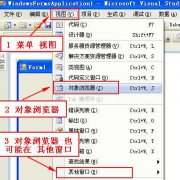(转)在低版本的SDK里使用高版本函数@SuppressLint(NewApi) or @TargetApi?
@SuppressLint 和 @TargetApi达到的效果是一样的,相对于SuppressLint ,,TargetApi会根据函数里使用的API,严格匹配SDK版本,给出编译错误,但是SuppressLint 则忽略了SDK版本。
例如:
[java] view plaincopy
@TargetApi(Build.VERSION_CODES.FROYO)
public static File getExternalCacheDir(Context context) {
File dir;
// if (!VersionUtils.hasDonut()) {
if (!VersionUtils.hasFroyo()) {
dir = new File(Environment.getExternalStorageDirectory().getPath()
+ "/Android/data/" + context.getPackageName() + "/cache/");
if (!dir.exists() && !dir.mkdirs())
dir = null;
} else {
dir = context.getExternalCacheDir();
}
return dir;
}
如果把VersionUtils.hasFroyo()改成VersionUtils.hasDonut()则会报编译错误,如果是@SuppressLint("NewApi") 则不会提示错误。比较严谨的角度讲,更加推荐TargetApi
原文地址:
(转)在低版本的SDK里使用高版本函数@SuppressLint("NewApi") or @TargetApi?
温馨提示: 本文由Jm博客推荐,转载请保留链接: https://www.jmwww.net/file/70613.html
- 上一篇:C#类遍历
- 下一篇:Windows环境下npm install常见错误



